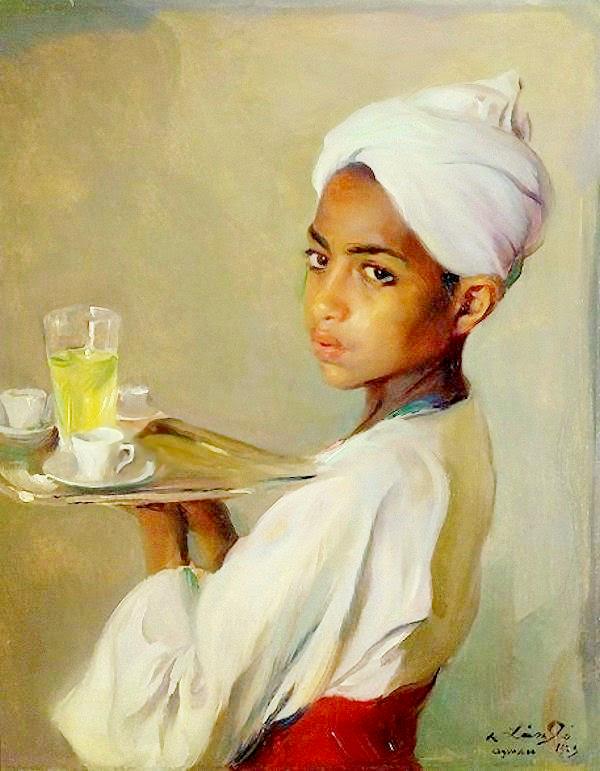
Philip de László: Nubian Servant Boy

Figure 1.--There is a portrait of who László called a 'Nubian servant boy'. We have no idea who he was, but he was clearly not a Nubian. Perhaps he was called a Nubian because it added a little exoticism to the boy's origin. The Nubian population was ethnically African. The boy here is clearly Arab and and not African. We have read about foreign servants, but in Britain at least they were more likely to be Indian (south Asian) than Arab. We are not sure if László actually visited Egypt or if the boy was employed somewhere in Europe. Another interesting question is why László painted this portrait. Except for his family, this is the only person he painted that did not come from a wealthy or prominent family. And his fees were substantial. It was not like a photograophic portrait. This boy's employer must have thought very highly of him to have commissioned a portrait. Or perhaps László took an interest in him while painting a portrait in a wealthy household.
|
|
There is a portrait of who László called a 'Nubian servant boy'. We have no idea who he was, but he was clearly not a Nubian. Perhaps he was called a Nubian because it added a little exoticism to the boy's origin. Nubia/Kush is a region along the upper (southern) Nile, roughly the region between Aswan in southern Egypt and Khartoum in central Sudan most noted as a source of gold and slaves. There was a Nubian/Kushite Egyptian dynasty--the 25th dynasty (8th century BC). The Nubian population was ethnically African. The boy here is clearly Arab and and not African. We have read about foreign servanbts, but in Britain at least they were more likely to be Indian than Arab. We are not sure if László actually visited Egypt or if the boy employed somwhere in Europe. László took commissions from all over Europe. We think it most likely that the portrait was done somewhere in Britain because of the enormous wealth of many British families and the imperial connections. It could have, however, been done on the Continent. We do not know if László visited Egypt, he did travel widely. But this is the only Arab portrait we have found. Another interesting question is why László painted this portrait. Except for his family, this is the only person he painted that did not come from a wealthy or prominent family. And his fees were substantial. It was not like a photographic portrait. This boy's employer must have thought very highly of him to have commissioned a portrait. Or perhaps László took an interest in him while painting a portrait in a wealthy household.
HBC

Navigate the Boys' Historical Clothing artistic pages:
[Return to the Main English art page]
[Return to the Main artistic page]
[Chronologies]
[Individuals]
[National]
[Styles]
Navigate the Boys' Historical Clothing Web Site:
[Return to the Main Philip de László pages]
[About Us]
[Introduction]
[Activities]
[Biographies]
[Chronology]
[Clothing styles]
[Countries]
[Bibliographies]
[Contributions]
[FAQs]
[Glossaries]
[Images]
[Links]
[Registration]
[Tools]
[Boys' Clothing Home]
Created: 1:36 AM 10/14/2018
Last updated: 1:36 AM 10/14/2018



